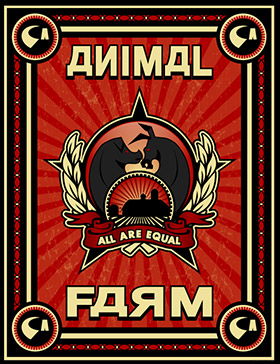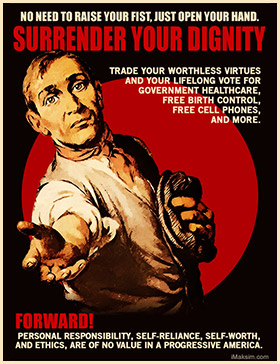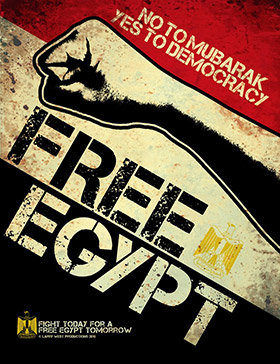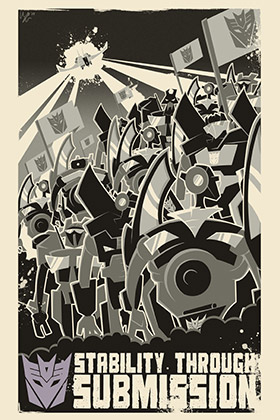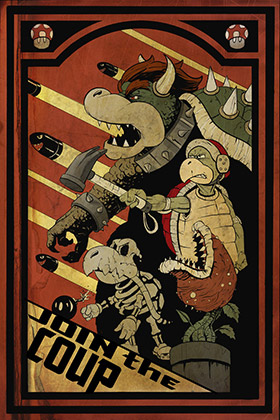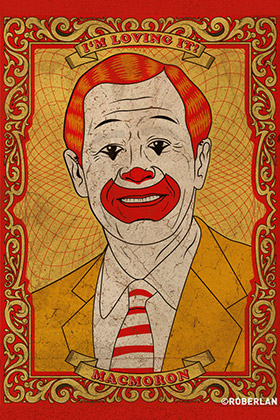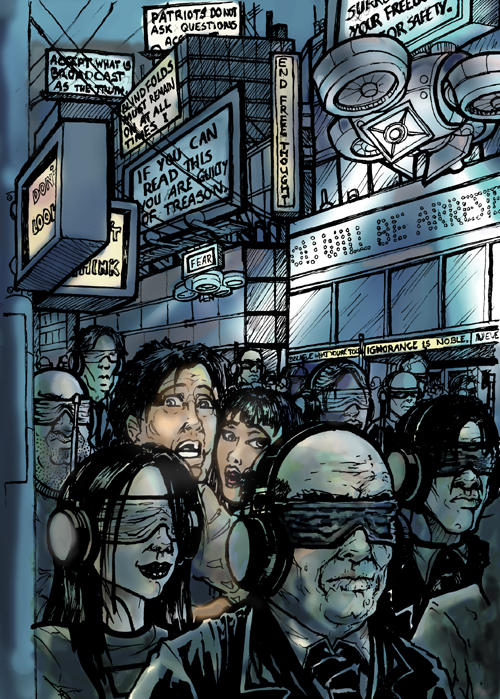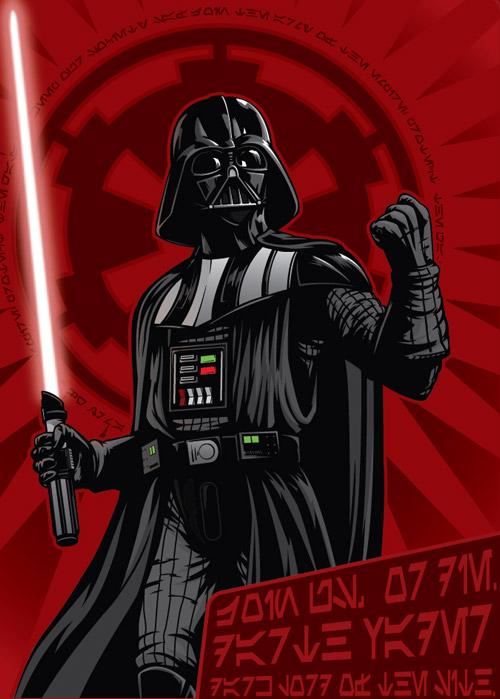
The Comfort of Mindless Obedience
When is information true and useful and when is it just “propaganda?” Why in fact is an image or phrase or animated art sequence “propaganda” rather than it simply being a “lie?” What about acceptable lies that define our society as much as they degrade it—for example commercials that obviously hype a product with untruths or political advertisements full of unachievable platitudes.
It can be instructive to look back at the early days of “mass society” and the need to impart vital national information before the ubiquitous presence of personal radios, televisions and telephones in every citizen’s home. World War I and World War II provided the framework worldwide for the mass “propaganda poster.” It’s amazing how similar the mass propaganda posters of the warring nations were – in their patriotic images just as much as in their simplistic messages of sacrifice and belief in the cause. Many are familiar with Uncle Sam, born in WWI and Rosie the Riveter from WWI, whose “Yes, we can,” was repurposed in the 60s and again recently as an Obama campaign maxim.
The messages seem simple and quaint today, instilling the glow of some kind of nostalgia. Yes, the point of propaganda was always to get us back in line, onto the straight and narrow for God and country or for country and religion alone, the conundrum that the opposition were doing the same was easily handleable without too much intellectual athleticism. In fact, sometimes mass conformity feels good – like a U2 concert. We’re being sold that something is way more important that it really is, but we don’t mind … so it’s “propaganda” as opposed to being a “lie.”
“We’re being sold that something is way more important that it really is, but we don’t mind … so it’s “propaganda” as opposed to being a “lie.”
“Us” vs. “Them”
In researching the subject the Mass Propaganda Poster didn’t make it through the Vietnam War era. If it showed anywhere as a graphic equivalency, it was on anti-war T-shirts. It wasn’t just improved TV technology and the daily coverage of that national struggle (in the jungles of Nam and the streets of American cities). It was also that the war was too confusing, to ambiguous, to be reduced to the simple “us” vs. “them” formula of the two wars that had come before. So iconic poster art of young American men fighting evil devils wasn’t just ineffectual, but insultingly simplistic.
So instead, the mass propaganda art posters of the 60s were the psychedelic rock-n-roll posters promoting the new phenomenon of guitar heroes. The cultural “war” it seems was better suited to the creativity of simple iconic poster art than the complex disaster of war. Of course, the use of mass propaganda in posters was reaching a zenith at the same time in China as part of the Cultural Revolution in every home, every workplace and every government operation.
Today, while “actual” political propaganda posters are still occasionally put out on the street of our cities to vex the establishment by artists like Robbie Conal, there is the new phenomenon, best exemplified by artist Shepard Fairey’s “OBEY” posters and stickers, of “faux (false) propaganda art,” which mocks and comments on the very concept of mass propaganda itself. The artworks often call up classic images from the “loose lips sink ships” days of war era propaganda to stir our patriotic fervor for battling the Sith and joining in other causes. Star Wars and Star Trek are favorite subjects used for the primary context of these fake posters, as well as many video games and movie and TV franchises. Faux propaganda memes are a regular subject for deviantART satirists as can be seen on this page.
Faux propaganda art has an eerie vibe – like playing with fire. Remember, this was the stuff utilized, for real, by feared despots to drive others to countenance the murder of millions. But now it seems so childishly safe in its simple messages. One has a feeling of nostalgia, even—as if any evil has been sapped from the subject, and with the viewer being a survivor of a bygone era. We are no doubt being manipulated and “sold” on more contemporary issues by more sophisticated means of mass propaganda flooding our brains daily—but at least these colorful beasts from the past are easily mastered for our simple enjoyment.
Once again, Do we have any scholars out there who might shed an even more educative light on the subject?
Has anyone been studying or reading extensively about the history of Propaganda Art?
Would love to hear opinions, analysis and corrections from those of you even more familiar with the history of propaganda art than I.
CommentaryFrom deviantART's Advisor in Chief
The notion of “faux propaganda” is false because it remains propaganda. When my kids asked me what I did during the Vietnam War, my answer was that I fought the war against the war in Vietnam; and that my side won. The strongest image I have of that movement is, of course, the peace sign. The second strongest is a raised red fist. The first of these symbols was borrowed from the anti-nuclear movement of the very early 1960’s. The second was borrowed from communist propaganda posters of the 1920’s and possibly earlier.
Shepard Fairey’s Obama poster was propaganda—for good, I believe, just like the peace sign—even though it owes its context to posters of Mao Tse Tung and the now high art of Andy Warhol. The red fist was propaganda for bad as it was to become to be understood and then it was used for good, as I believed; and will likely be considered bad or good again in another round of propaganda to come. But what’s interesting to me is that the stylized look of a Mao poster, the peace sign and the raised fist will always be considered propagandistic in a Pavlovian sense. You see them and you know them to be propaganda.
—makepictures
Questions For the Reader
- Do you like modern faux propaganda art or does anything recalling the Horrors of past wars still seem inappropriate as an art subject – if only because of possible inadvertent trivialization?
- Do you think faux war propaganda posters for movies like Star Wars raise real issues about the danger of war (like in Star Wars) ever being presented, even subconsciously, as “fun?”
- Are there examples of modern mass postering (like the Obama “HOPE” political posters) that still send “real” and effective messages and information?
- What about your own politics drives your feelings on this subject and artform?

